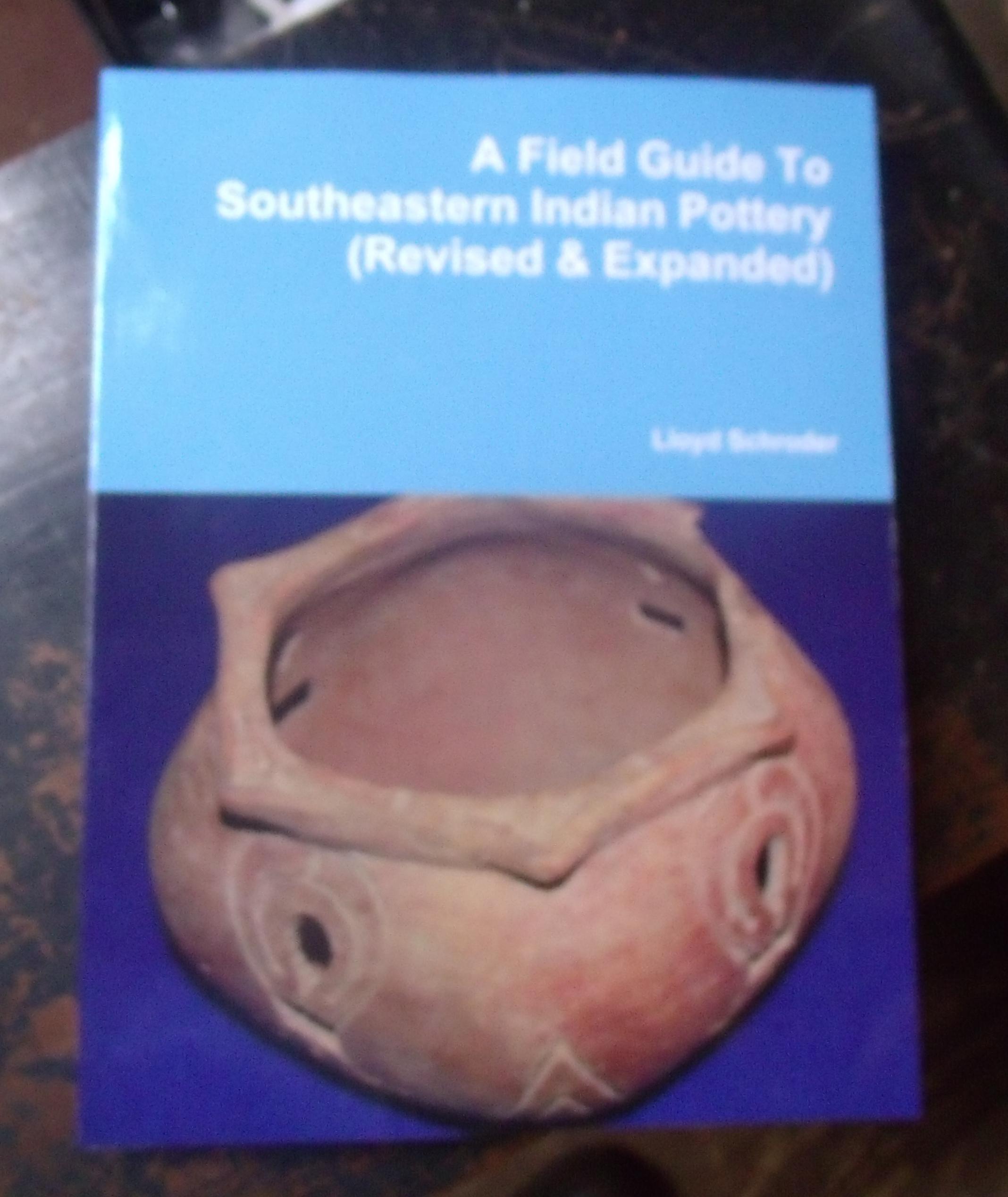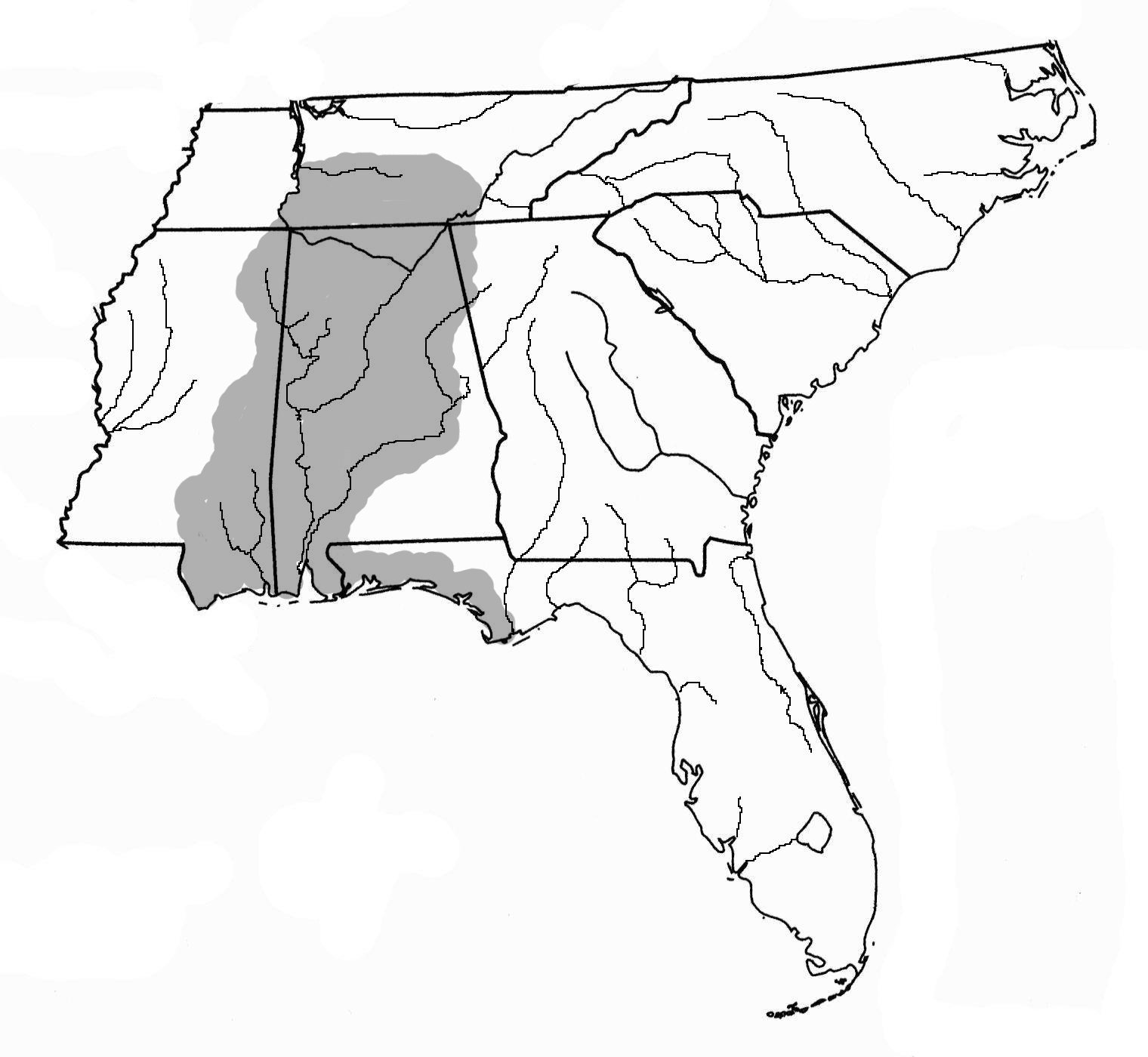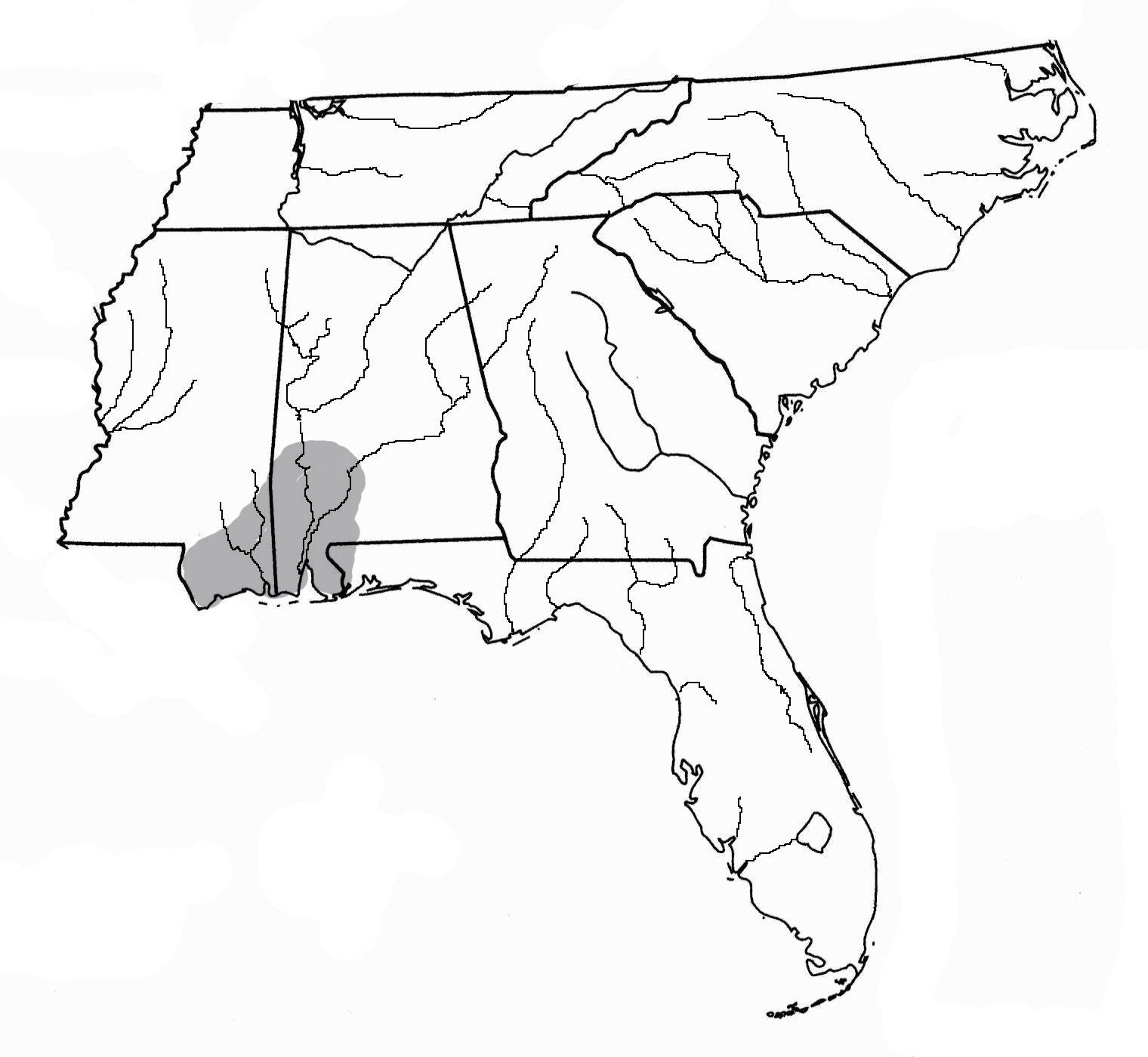——–Click on the surface treatment that most resembles your find———–
Pottery is an amazing artifact. There are many types, all with different designs or no design at all. Designs come from the potter’s imagination or his beliefs. All have different tempers, some of grit or small pebbles, some of Spanish Moss that has burned away, leaving only a trace of its existence. Some types are tempered with sand and some with clay; others with what some would call no temper at all, only to discover that there are small, microscopic sponge spicules that hold it together.
Think about this. Pottery is a lot like people. Each one was fashioned by the Potter’s hand, each uniquely designed from the Potter’s heart. Some were designed for daily use while others were designed for special occasions and celebration. All were tempered, but all have a different temperament. How has the Potter designed you and tempered you? What was His special plan and purpose? We are clay in His hands. Many are like much of the pottery we find, broken and discarded by the world, but there is still hope. Like the pot sherds that were broken and cast aside, then recovered and rounded into gaming stones to become the center of joy in an Indian’s life, our broken lives can be renewed to become the center of joy in the Potter’s heart.
For more detailed information on these and other pottery types within the Southeastern United States, please see our “Publications” page to order Lloyd Schroder’s Field Guide to Southeastern Indian Pottery (Revised & Expanded).
This amazing new book contains over 500 pottery types, each explained in very readable terms with thousands of illustrations and maps of distribution. The volume has earned the acilades of senior archaeologists like David Anderson of the University of Tennessee and well-known Georgia archaeologist Jerald Ledbetter. No serious student of archaeology should be without it.

RESEARCH: Gordon R. Willey named this type in (1949). Hollingsworth reported this type in his research at the Sheep’s Bluff Shelter, Franklin Co, Alabama in 1991. Examples were also found by Steve Wimberly at the McVay Village site in Clarke County, Alabama.
TEMPER: This is a coiled pottery type that is tempered with fine, clean sand. Both interior and exterior surfaced are usually mouse gray with a darker gray core. The exterior surface is smoothed and may retain smoothing marks.
SURFACE DECORATION: Surface decorations consist of thin incised lines made on moist clay. The clay had a tendency to pile up along the lines. Designs are rectilinear and curvilinear and include a key-like design. The designs may be zoned. One or more nodes may also be placed just above a series of incised horizontal lines.
VESSEL FORM: Sherds at the McVey Village site indicate medium-sized deep bowl or an open, flaring-mouthed jar. Appendages appear from otherwise rounded simple lips.
CHRONOLOGY: Alexander pottery has been assigned to Griffin’s Late Gulf Formational stage in northwest Alabama dating between 500 and 100 BC. Associated artifacts might include Adena, Epps and Gary points.
GEOGRAPHICAL DISTRIBUTION: Alexander pottery appears from the area of Carrabelle, Florida to eastern Louisiana and as far northward as the middle Tennessee River Valley and east to the Wheeler Reservoir area.

RESEARCH: This type was originally defined by James Ford in 1936. Ford’s description was later recorded as part of the Handbook of Mississippi Pottery Types by Bettye Broyles and Robert Thorne in SEAC Bulletin No. 7 in 1968.
TEMPER: This is a coiled pottery type that is tempered with both grit and fine clay particles that left the texture fine and compact. The surface colors range from gray to buff with cores that are usually black. The surfaces are usually smooth.
SURFACE DECORATION: The surface is decorated with rectilinear or curvilinear arrangements of lines that were engraved with a pointed tool after the paste had air-hardened. The lines are generally arranged parallel to each other and fairly close together. Engraving appears on the interior bottom of the vessel.
VESSEL FORM: The only vessel form known for this type is a shallow bowl. Rims appear to be simple and lips were flat at the Mangum site. Ford gave no basal information; however the examples above indicate a flat to rounded base.
CHRONOLOGY: Ford believed this pottery was related to the Mississippian, Plaquemine period that dated between A.D. 1200 and 1400. Associated artifacts might include Alba and Hayes points.
GEOGRAPHIC DISTRIBUTION: Examples of Anna Interior Engraved pottery were recovered at the Mangum and Fatherland sites in southwestern Mississippi.

RESEARCH: This type was named by Philip Philips, James Ford and James Griffin in 1951 for the Arcola site in Bolivar County, Mississippi. The type is known from northwest and central Mississippi.
TEMPER: The type is tempered with coarse shell and can be distorted when large particles are used. The lamination and poor wedging typical of shell tempering is present. The paste exterior and core are usually gray, but pinkish tints are known. The surfaces are generally smoothed before decoration; however leaching can roughen the surface.
SURFACE DECORATION: Designs are made with medium to narrow V-shaped incised lines that may be more U-shaped at times. Lines are more closely spaced and done with more care than with Barton Incised pottery. The designs are rectilinear and form line-filled triangles. Occasionally a single incised line appears at the base of the undecorated rim, setting it apart from the shoulder area where the remaining decorative patterns occur.
VESSEL FORM: Vessel forms appear to be primarily jars with straight rims and restricted necks. Shoulders are strongly profiled. Rims are almost always plain with lips that are rounded and sometimes thickened, but usually are the same thickness as the rim.
CRONOLOGY: This type has been described as an “intermediate” form of the Mississippian period. This pottery might be found with Scallorn points.
GEOGRAPHIC DISTRIBUTION: This type has been recovered from southern Mississippi at the Fatherland site to northwest Mississippi and the adjacent portions of Arkansas.

RESEARCH: Philip Phillips, James Ford, and James Griffin defined this type from their survey of Mississippi in 1951. Their definition of the type was reprinted in the Handbook of Mississippi Pottery Types, SEAC Bulletin No.7 in 1968.
TEMPER: This type is tempered with coarse shell particles measuring between 5 and 7mm in diameter. External surfaces are gray to buff in color with occasional red or pink hues. There is little variance from core colors because of uniform firing. The interior and exterior surfaces are smooth and occasionally moderately polished. Rough surfaces that occur are due to shell particles leaching out.
SURFACE DECORATION: Decoration consists of incised lines done with a pointed instrument. Lines measure from .5 to .3mm in width and have burred edges due to incising the wet clay. Incised lines tend to cross being poorly applied. The design is most often made of groups of lines slanting downward from the lip to the edge of or on the shoulder area. Other designs include line-filled triangles or trapezoids, cross-hatching and chevrons. A single incised line, a single row of punctations, or, less frequently, a row of appliqué nodes frequently terminate the design field at the junction of the rim and shoulder.
VESSEL FORM: The dominant form for this type is a large, weak-shouldered globular cooking jar with a gentle to strong recurved rim. This is known as the standard Mississippi jar and it appears to be wider than it is tall. The lip has a straight, smooth edge that is occasionally decorated with punctuations, notches, nicks or lugs. Appendages occur as two or four lugs or handles, or two lugs and two handles. Lugs are usually horizontal (above) and may extend as much as 3.5mm. They may be semi-circular or triangular and notched. Some very large lugs are known. Handles are parallel-sided strap forms that extend from the lip to the bottom of the decorated area at the shoulder. The bottoms are flat to round.
CHRONOLOGY: This type belongs to the Mississippian period and might be found with Mississippian Triangular, Alba and Colbert points.
GEOGRAPHIC DISTRIBUTION: This type was recovered in the majority of sites studied by Phillips, Ford and Griffin in northwestern Mississippi.

RESEARCH: This type was named by Steve Wimberly in 1960. Wimberly recovered sherds of this type at the Beckum Village site in Clarke County and at the Andrew’s Place Shell Midden site in Mobile County, Alabama.
TEMPER: Clay was used to temper this type.
SURFACE DECORATION: Thinly incised lines spaced 4 to 5 mm apart are crosshatched to form diamond shapes across the surface. Designs seem to cover the exterior of the vessel beginning at the rim.
VESSEL FORMS: Vessel forms are not mentioned, but rims seem to be simple and straight.
CHRONOLOGY: This type belongs to the Late Woodland Weeden Island period in Alabama and the Coles Creek period of Louisiana. Associated point types might include Woodland Triangular points, Spike points and perhaps Jack’s Reef Corner Notched points in Alabama and the Catahoula and Homan points in Mississippi.
GEOGRAPHIC DISTRIBUTION: Distribution for this type occurs from Louisiana to the Mobile Bay and north into the lower Tombigbee River system of Alabama.

RESEARCH: David W. Chase named and defined this type from the Five House site in Dallas County, Alabama in 1969.
TEMPER: This is a grit-tempered type with smooth, but unburnished surfaces where tooling marks are most often visible.
SURFACE DECORATION: The surface of this type is plain except for a “single,” crudely incised line about 1 to 1.5cm below the lip. The line is deeply incised and often segmented with segments not connecting or overlapping and may run as a double line for a short distance. Execution is sloppy.
VESSEL FORM: These are shallow, crescent-shaped bowls with inverted rims and rounded lips and bottoms.
CHRONOLOGY: This type is found with Whiteoak pottery and is probably associated with the same Middle Woodland context. Associated point types might include spike forms, Woodland Triangular, Baker’s Creek, Camp Creek, Yadkin and Greenville points.
GEOGRAPHIC DISTRIBUTION: Chase suggested that this type might share a similar distribution as Whiteoak pottery in central Alabama.
RESEARCH: Collins first addressed this type in 1927. Later, James Ford described it in 1936, and later Quimby described it as part of his work in The Boyd site in Mississippi. Quimby’s description was later included in the Handbook of Mississippi Pottery Types in 1968.
TEMPER: Chickachae pottery is tempered with very fine sand or grit. At the Boyd site, sherds had a reddish brown to gray colored exterior surface, some with firing smudges, while cores were somewhat lighter in color.
SURFACE DECORATION: A comb-like tool was used for incised and combed lines, the latter of which seems more important. Decoration consists of angular or curvilinear elements. The curvilinear bands, like those on Bayou Goula pottery, are arranged in parallel bands, meanders or scrolls. At the Boyd site, the designs consisted of narrow bands of 4 to 5 closely spaced incised lines each.
VESSEL FORM: Sherds may suggest simple bowls with direct rims and rounded lips.
CHRONOLOGY: Chickachae pottery, both plain and decorated, was made by the Choctaw people during the Historic period. Associated point types might include the Alba, Colbert, Scallorn and Hayes types.
GEOGRAPHIC DISTRIBUTION: Known examples are from the Fatherland and Boyd sites in southwestern and central Mississippi.
RESEARCH: Steve B. Wimberly discussed this type and the influence of the Coles Creek culture on the potters of the Tombigbee River valley in 1960. Wimberly recovered a single rim sherd from the Porter Village site and several from the Andrews Place Shell Midden site. Wimberly’s research was done in sites in Clarke and Mobile counties, Alabama.
TEMPER: Clay and fine sand were used as temper in the examples recovered by Wimberly. The surface of the sherds was gray and the core was dark gray.
SURFACE DECORATION: Decoration on the recovered sherd consisted of 27 incised lines encircling the upper portion of the vessel. Below this point the vessel appears to have been plain. Incising was fairly closely spaced and the lines were fine.
VESSEL FORMS: Sherds suggest that the vessels were deep and straight sided. The lip is round-pointed.
CHRONOLOGY: This type was assigned to the Late Woodland Weeden Island period. Associated point types would include Colbert, Scallorn and Alba points.
GEOGRAPHIC DISTRIBUTION: Wimberly suggested that the style and temper of the recovered sherd indicated an influence from the Coles Creek culture of the Mississippi River valley in Louisiana, Arkansas, and Mississippi.
RESEARCH: Philip Phillips, James Ford, and James Griffin defined this type from their survey of Mississippi in 1951. Their definition of the type was reprinted in the Handbook of Mississippi Pottery Types, SEAC Bulletin No.7 in 1968. The type is named for the Fatherland site in Adams County, Mississippi.
TEMPER: This is a coiled pottery type that used a mixture of fine to medium sand, clay, and shell along with an unknown organic material. Surface colors can range from buff to dark gray or red-brown. The texture is fine. The surface is smooth and often polished and can be red filmed on either or both interior and exterior surfaces.
SURFACE DECORATION: A pointed instrument or comb-like tool was used to make finely incised lines on the surface of the vessel. Designs consist of scrolls or meanders in a number of minor variations. One to four incised lines generally encircle the rim, especially on bowl forms, to which are attached incised triangles that separate the upper portions of the scrolls. The design usually covers the entire exterior of the vessel.
VESSEL FORM: Known forms include shallow bowls with rounded bottoms, a variety of jars with flat bases, and bottle-like jars with rounded or flattened bases. Sites in Lee County, Mississippi also included incurved bowls and a short-necked water bottle. Bowl rims are usually incurving, jars are usually out-flaring, but straight, vertical rims do occur on both vessel types. Lee County rims are thick but unmodified. Lips are rounded or flattened and bases are rounded on bowls and flattened on jars, but both forms can have platform bases. No appendages are known.
CHRONOLOGY: These vessels were made during the Natchezan period dating between A.D. 1500 and the early 1700’s. Associated points might be Madison and Nodena points.
GEOGRAPHIC DISTRIBUTION: This type is known at the Fatherland site in southwestern Mississippi and northeastern Mississippi and the area of Lee County, Mississippi and into northern Alabama. There is evidence that the Natchez people brought this type to the Cherokee people of North and South Carolina, Georgia and Tennessee during the Historic period.
RESEARCH: Steve B. Wimberly identified this type in 1960. Wimberly’s research focused on sites in Clarke and Mobile counties, Alabama.
TEMPER: This type is essentially Weeden Island pottery in Alabama except that it is tempered with large particles of ground clay. The texture is fine and often feels soapy to the touch. The surface color is generally buff, but may range from black to reddish brown.
SURFACE DECORATION: The decoration on this pottery consists of a combination of incised lines and punctations. The designs are a contrast of decorated and smooth areas identical to those described for Weeden Island Incised, except that Wimberly includes lines of “dragged punctate” in the design elements. Design elements used include “overhanging” incised lines that run parallel to the rim and end with deep punctations, rows of triangular punctations, scattered triangular punctations, arrangements of tear-drop punctations, delicate dentate stamping, fine line cross-hatching, and, in exceptional cases, red pigment. The decorated areas are zoned with incised lines with punctations spaced on them. The decorated area is usually depressed below the remaining undecorated surface. Designs are usually curvilinear meanders and are confined to a band encircling the upper part of the vessel. In vessels with a neck, the decoration is on the neck.
VESSEL FORMS: Vessel forms are one of three types: a globular jar with gently incurving shoulders and a small mouth that may also have four lobs; a medium to large caldron with an incurving rim and a vertical neck that extends 2 to 3 inches where the decorative element is found; and a shallow bowl with a concave bottom. This last form has four large “ears” that extend horizontally from the rim of the bowl to form a square while the opening of the bowl is round. Rims are thickened and may have one or more incised lines on the thickened portion. Lips may be rounded or flattened with an incised line on the flattened lip. Bottoms are flattened with a marked angle between the bottom and the vessel wall.
CHRONOLOGY: This type belongs to the Weeden Island I and II periods. Associated points are Alba, Hays can Scallorn points.
GEOGRAPHIC DISTRIBUTION: The distribution suggested for this type extends from Louisiana to central Mississippi and eastward to the sites investigated by Wimberly.